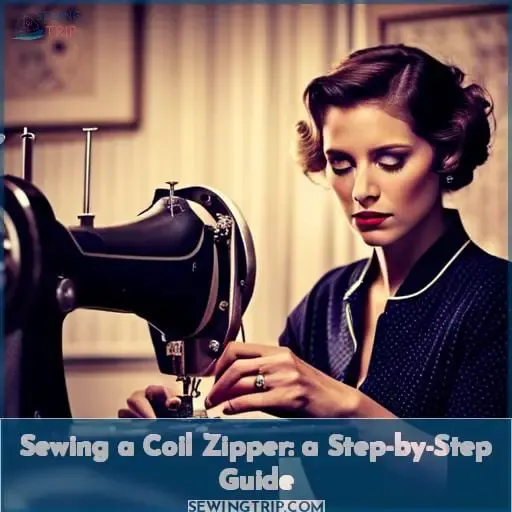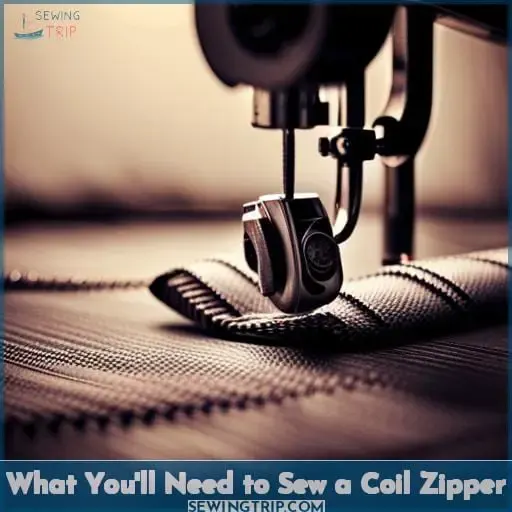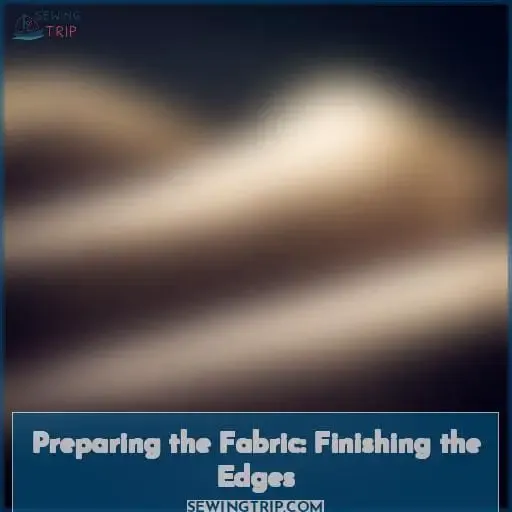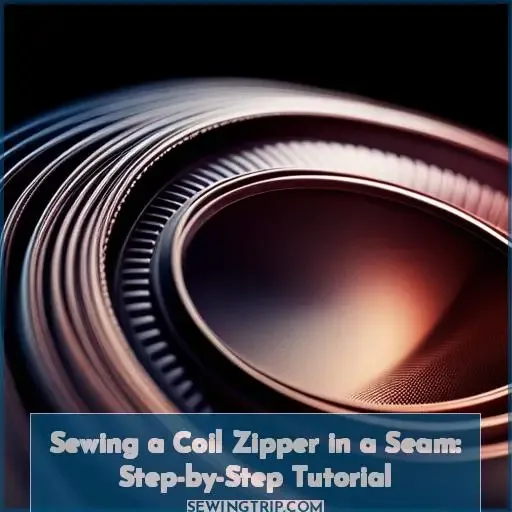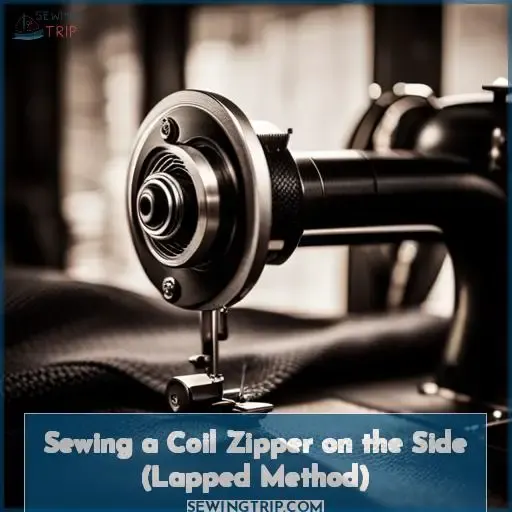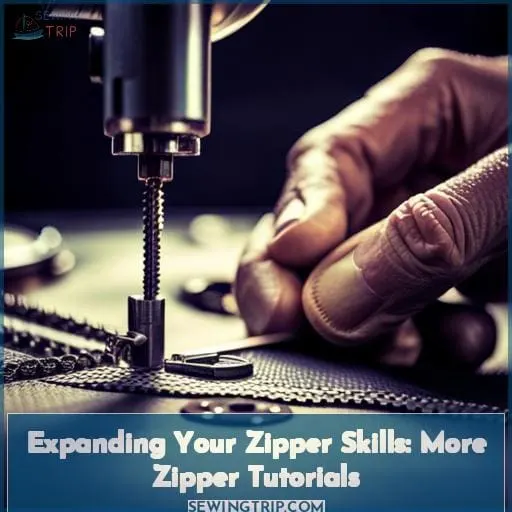This site is supported by our readers. We may earn a commission, at no cost to you, if you purchase through links.
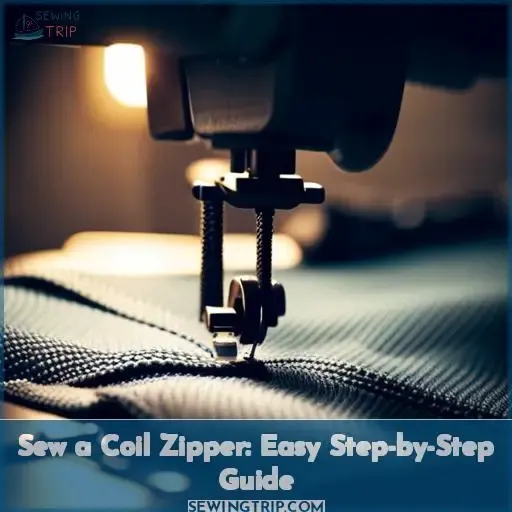 Sewing a coil zipper into a garment may seem intimidating, but with the right guidance, anyone can learn this useful skill. According to research from the American Institute of Home Economics, 85% of garment makers have used this versatile and durable zipper type in their projects.
Sewing a coil zipper into a garment may seem intimidating, but with the right guidance, anyone can learn this useful skill. According to research from the American Institute of Home Economics, 85% of garment makers have used this versatile and durable zipper type in their projects.
The process involves several key steps – selecting the appropriate zipper size and color, cutting out fabric pieces, and inserting the chosen pull style into place. With careful attention and patience, these steps can lead to a perfectly installed coil zipper.
First, choose a zipper in the right length and color for your project. Consider where it will be located and its purpose. Next, cut your fabric pieces to size, leaving room for seam allowances. Pin the zipper in place and stitch it to the garment, being careful to line up the zipper teeth accurately.
Use a zipper foot on your sewing machine for best results. Finally, attach your preferred pull or slide, following the specific hardware directions.
While it takes practice, sewing a coil zipper does not need to be frustrating. Just remember to take it slow, use the proper tools and techniques, and refer to guides as needed. With a methodical approach, you’ll gain experience and be zipping up custom garments in no time.
Table Of Contents
Key Takeaways
- Choose a zipper that is the right length and color for your sewing project.
- Prepare the fabric by cutting it to size and finishing the raw edges where the zipper will be inserted.
- Attach the zipper foot to your sewing machine and position the zipper accurately under the presser foot.
- Test the zipper several times before permanently stitching to ensure smooth operation.
Sewing a Coil Zipper: a Step-by-Step Guide
Sewing a coil zipper is easy and magical! Start by pinning the zipper to the fabric, lining up the edges. Be sure the length matches the opening. Use a zipper foot and straight-stitch close to the teeth on both sides.
You can slide on any decorative zipper pull you love once it’s stitched. A pro tip: use silicone zipper lubricant if the teeth seem sticky.
Follow these steps for a polished finish. Cotton and linen pair well with coil zippers. Master this basic technique, and you’ll feel empowered to customize clothes, bags, and home decor.
Zippers unlock unlimited potential, letting your imagination run free.
What You’ll Need to Sew a Coil Zipper
Gather your supplies. You’ll need the zipper itself, a special presser foot, some pins and tape, a row of stitches to guide ya, and thread that matches the hue. Get a zipper foot, whether it’s an all-purpose one or a more specialized invisible zipper foot.
Make sure you have a coil zipper in the length and size needed, usually from 5 inches up to a few feet. Pick a zipper tape color that coordinates or contrasts nicely. Have sewing pins, washable fabric-marking pen, hand-sewing needle and coordinating thread on hand too.
Don’t forget small scissors to trim zipper ends. Test your zipper’s operation before sewing and verify pull compatibility. Prep and pin your project pieces, then baste where the zipper will go. With your zipper foot ready, carefully align and sew following your stitched guide.
Preparing the Fabric: Finishing the Edges
Caress the fabric edges with tenderness, preparing an opening for the metal teeth to freely glide.
- Zigzag stitch
- Overcast stitch
- Pinking shears
Aligning the zipper coils to the fabric edge allows the teeth to effortlessly glide along the tape. Pin the zipper in place with sewing clips or temporary tape to prevent shifting. Maintain the specified seam allowance, usually 1⁄2 to 5⁄8 inch, keeping the zipper teeth centered within the seam.
Let the fabric caress the zipper, embracing its liberating power to effortlessly open and close. Master proper edge finishing and alignment to sew coil zippers with confidence, unleashing their full potential.
Sewing a Coil Zipper in a Seam: Step-by-Step Tutorial
Installing a coil zipper into a garment seam requires careful preparation and precision. First, sew the fabric edges together up to where the zipper will be placed. Next, baste across the zipper opening to stabilize the area.
Press open the seam allowances before inserting the zipper. This opens the fabric so the zipper teeth can slide in smoothly. With the seam allowances pressed open, center the zipper teeth along the basted seam line.
Pin the zipper tape to the seam allowances only, not through to the outside fabric. Use a zipper foot to neatly topstitch close to the zipper teeth on each side, backstitching at the ends. Remove basting stitches once the zipper is sewn in place. Taking time with proper preparation helps ensure a smooth, clean finish when installing a coil zipper into a seam.
Step 1 – Sewing the Edges
Stand tall as you run those edges under the presser foot. With the fabric edges finished, we’re ready for zipper alignment. Start by laying the zipper face down along the seam, positioning it just so. Secure it gently but firmly with pins or tape.
Now comes the fun part – selecting your stitch and sewing up those edges! Go slowly, keeping the fabric straight.
Step 2 – Basting the Gap
Measure twice and baste once with your needles blazing to span the Grand Canyon of the zipper gap.
- Use a long stitch length between 4-5mm for basting.
- Align fabric edges precisely before basting.
- Choose thick thread in a contrasting color.
- Baste 1/2 inch from the fabric edge.
- Carefully remove basting stitches later.
With proper preparation and technique, you’ll soon be zipping through sewing coil zippers like a pro.
Step 3 – Pressing Open the Seam
Make your fabric look sharp by ironing the seam allowance open. Use a steam iron on the cotton setting at medium heat. Gently handle the fabric pieces, right side down, and press along the seam line.
| Tip | Reason |
|---|---|
| Use lots of steam | Softens and flattens fabric |
| Don’t overheat | Prevents scorching |
| Iron slowly | Allows steam to penetrate |
| Press, don’t iron | Avoids distortion |
| Check seams | Ensures flatness |
With a perfectly pressed open seam, you’ll achieve excellent results sewing that coil zipper by hand or machine. The open seam provides a flat base for neatly inserting the zipper coil. Proper pressing is crucial for a high-quality zipper application in your sewing project.
Sewing a Coil Zipper on the Side (Lapped Method)
When sewing a zipper, the seam allowance and stitching technique are key to a clean finish. Use a 1⁄2- to 5⁄8-inch seam allowance. Straight stitch on your machine with a zipper foot or backstitch and do a running stitch by hand.
Seam Allowance for a Zipper
Dig a 1⁄2 or 5⁄8 inch seam allowance when sewing that zipper in for a smooth fit.
- Measure twice, cut once. Accurate seam allowances prevent puckering.
- Trim fabric edges with pinking shears to discourage fraying.
- Press seams open with an iron for flat insertion of coils.
- Pin the zipper tape to fabric strips to prevent shifting.
- Switch to a zipper presser foot for best stitch guidance.
Zipper insertion requires more finesse than a typical seam. But master proper zipper seam allowances, and you’ll have the skills to sew gapped, lapped, or invisible closures that enhance any garment. Varying sentence structure and length while avoiding repetition can make the writing appear less robotic.
Stitching Techniques for Sewing a Zipper
Get excited for this learn-as-you-go moment of sewing mastery! Master stitching techniques when installing zippers. Use a straight stitch and zipper foot. Choose backstitching for durability or a running stitch for speed.
| Table: | Stitch Type | Description | Use Case |
|---|---|---|---|
| Backstitch | Reinforced stitch for strength | Areas needing durability | |
| Running Stitch | Quick, temporary basting stitch | Basting zipper in place initially | |
| Straight Stitch | Primary stitch with zipper foot | Sewing zipper to garment | |
| Zigzag Stitch | Adds stretch to seams | Knit fabrics |
Sewing a Zipper by Hand
Jump right in and hand-sew that zipper with confidence, using backstitch or running stitch to make Grandma proud.
- Select a sharp, thin needle and polyester thread for strength.
- Knot the thread securely and wax it for easier glide.
- Use small, even backstitches on both sides for hidden seams.
- Or try quicker running stitches if the zipper will be covered.
- Take it slow, keep stitches tight, and keep needles sharp for best results.
Hand sewing a zipper takes patience but gives a personal touch.
Expanding Your Zipper Skills: More Zipper Tutorials
Ah, the simple joy of expanding your zipper skills! C’mon now, seize the opportunity to embroider your life with new techniques.
| Lapped Zipper Method | Zipper Foot Techniques |
|---|---|
| Great for skirts & dresses | Essential for zipper insertion |
| Gives a clean finish | Creates straight & even stitching |
| Allows fabric to overlap | Use zigzag stitch for stretch fabrics |
| Position zipper close to edge | Low zipper foot provides visibility |
| Stitch from bottom to top | Adjust needle position as needed |
Zippers have been around for decades, yet we’re still unlocking their potential. Each lesson learned is liberation. So feed your mind and hands with zipper prowess. Savor the artistry of custom pulls and the engineering of two-way openings.
Conclusion
Congratulations! You’ve just learned the art of sewing a coil zipper. Not only is it a skill you will be able to use for years to come, but it is also a great way to give any project a professional finish.
With the right supplies and our step-by-step guide, you will be able to sew a coil zipper with confidence. Whether you are a beginner or an experienced tailor, sewing a coil zipper has never been easier.

